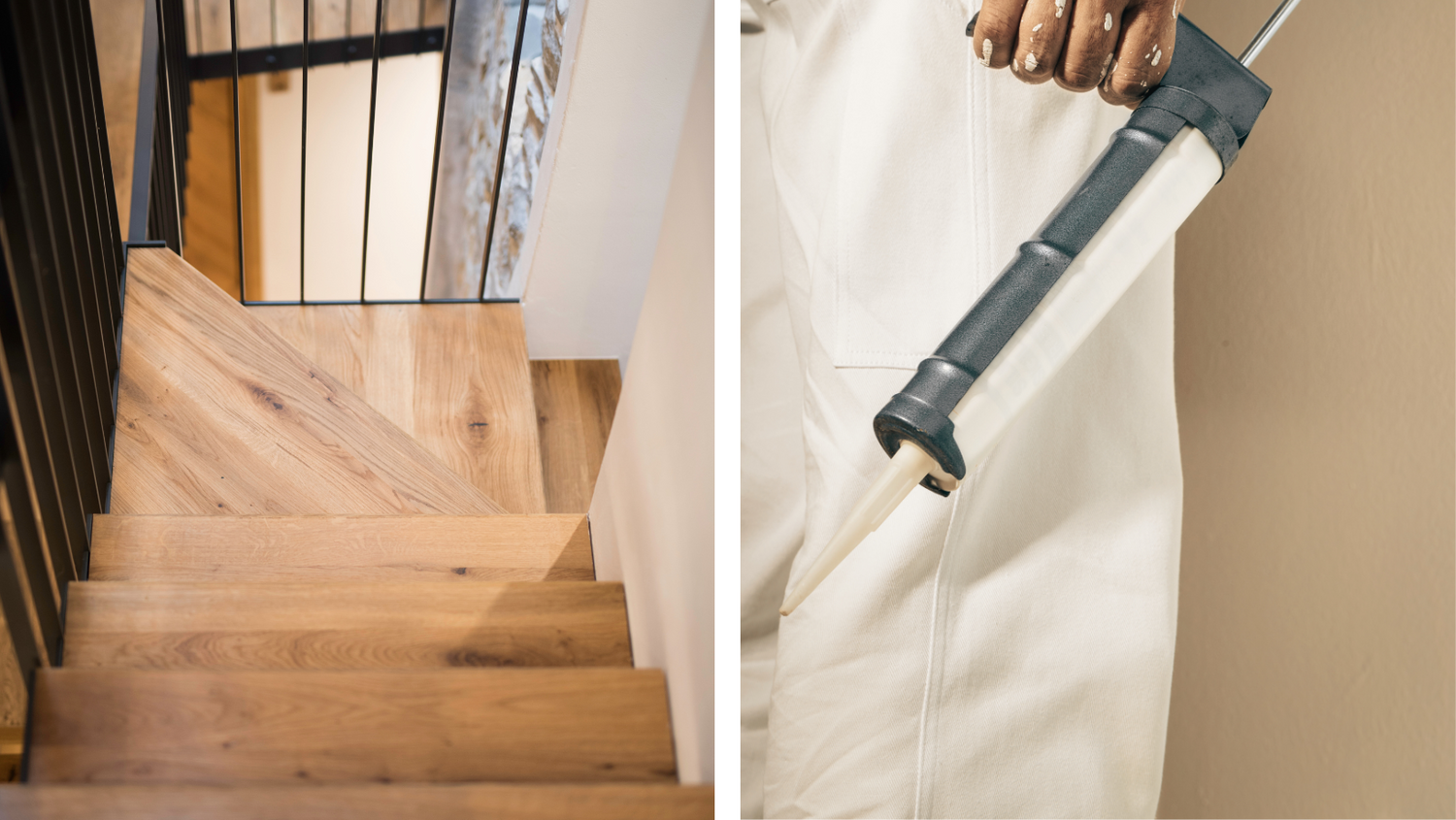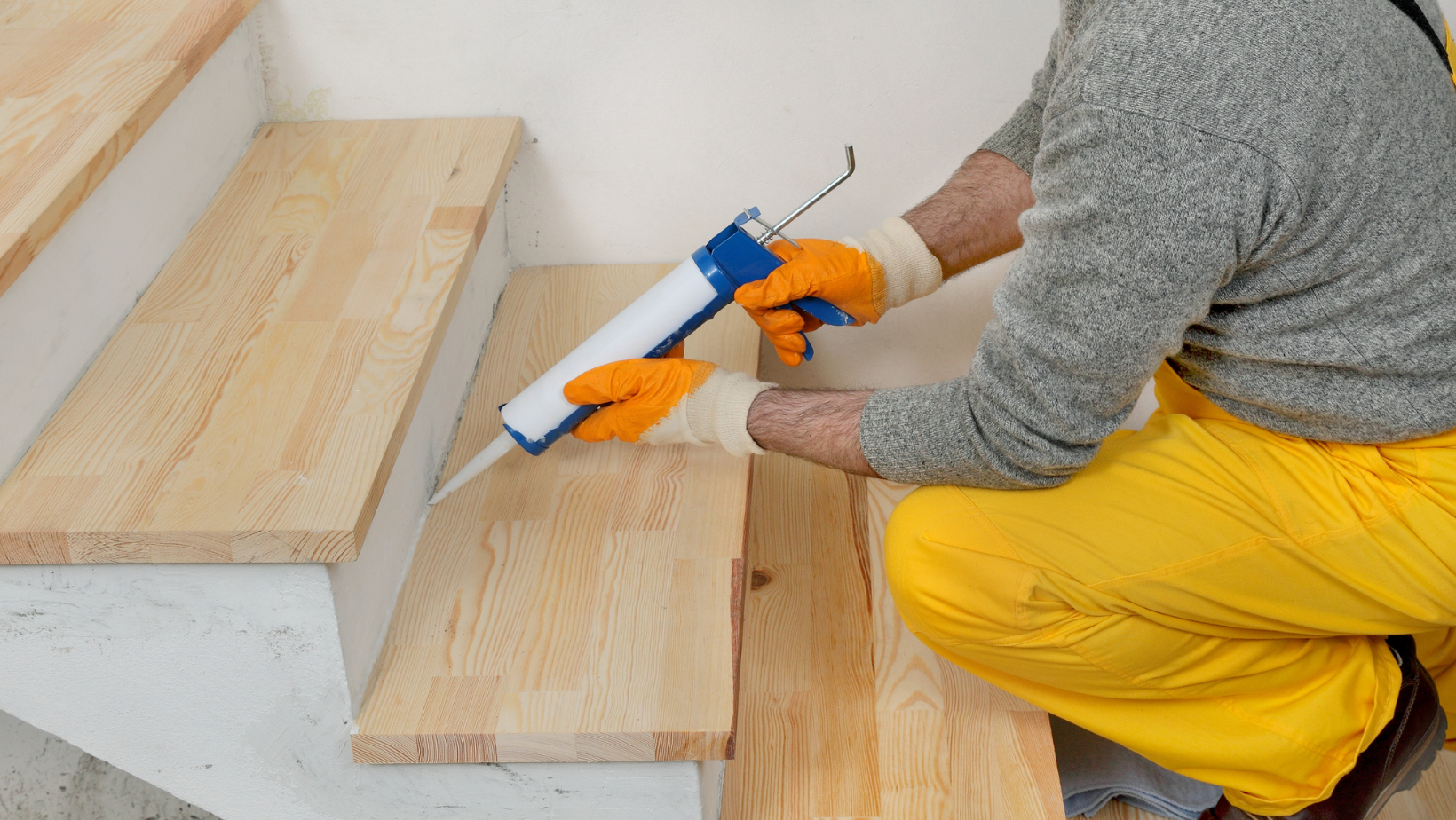Are your wood stair treads starting to look worn or vulnerable to damage?
Knowing how to seal wood stair treads is key to protecting them from moisture, scratches, and daily wear.
To seal wood stair treads, clean and sand the surface, apply caulk to fill gaps, and finish with a durable coat of polyurethane.
In this guide, you’ll learn a step-by-step process to keep your stairs looking beautiful and strong for years, whether you've installed plush carpet stair treads or opted for a different material.
We'll cover expert tips to achieve a professional finish, even if you’re new to DIY projects.
Understanding the Importance of Sealing Wood Stair Treads
Wood stair treads do more than just help you move between floors.
They also add style and warmth to your home.
Without sealing, they can get damaged over time, especially in busy areas.
High foot traffic, spills, and changes in temperature can cause the wood to wear down faster if left unprotected.
Sealing creates a barrier that helps maintain the structure and appearance of the wood, making your stairs look new for longer.
The Benefits of Sealing Wood Stair Treads
Sealing protects stair treads from moisture, spills, and scratches.
It helps them last longer and keeps the wood looking beautiful.
Sealed wood is easier to clean and maintain.
The sealant also helps prevent stains from setting in, which is especially helpful in homes with kids or pets.
Additionally, sealing can enhance the wood grain, giving your stairs a polished, professional finish that adds value to your home.
Common Issues with Unsealed Wood Stair Treads
Unsealed wood can absorb water, causing warping and stains.
It’s more likely to get scratches, dents, and other damage.
This can make your stairs look old and worn out quickly.
Over time, moisture can seep deep into the wood, leading to mold growth or even structural damage.
Without a protective seal, regular cleaning becomes more difficult, and dirt can settle into the wood grain, making it harder to restore its original look.
How Caulk and Polyurethane Provide Long-Lasting Protection
Caulk fills small gaps and cracks to stop moisture from getting in.
Polyurethane creates a tough layer on top of the wood that resists scratches and damage.
Together, caulk and polyurethane keep your stair treads strong and looking new for years.
Caulk is flexible, allowing the wood to expand and contract with changes in temperature without cracking.
Polyurethane adds an extra layer of defense against everyday wear and tear, making your stairs more durable in the long run.
Choosing the Right Caulk for Wood Stair Treads
Picking the right caulk is important to get the best protection.
The type of caulk you need depends on your stairs and the wood you’re sealing.
Some caulks are better suited for indoor use, while others are designed to withstand outdoor conditions.
Using the wrong type could result in poor adhesion or reduced durability, so it’s essential to match the caulk to your specific project needs.
Understanding the Different Types of Caulk Available
There are different types of caulk, like silicone, acrylic, and polyurethane caulk.
Each one has special features that work best in different situations. Silicone caulk is highly flexible and waterproof, making it great for areas exposed to moisture.
Acrylic caulk is easier to paint over, which is ideal for indoor staircases where appearance matters.
Polyurethane caulk offers excellent durability and is perfect for high-traffic areas or outdoor stairs.
Factors to Consider When Selecting Caulk for Wood Stair Treads
Think about how flexible, strong, and long-lasting the caulk needs to be.
For outdoor stairs, choose a caulk that handles weather changes well. Indoor stairs might need caulk that can be painted to match your decor.
Also, consider the drying time and ease of application, especially if you’re working on a large project.
Reading product labels and reviews can help you make a more informed decision.
Recommended Caulk Options for Different Types of Wood
For butcher block wood stair treads, choose caulk that is waterproof and food-safe.
For pine stair treads, flexible caulk that can be painted is a good choice.
If you have rubber stair treads, look for caulk made for rubber materials.
Hardwoods like oak may require caulk with stronger adhesion due to their dense grain.
Always test a small area first to ensure the caulk bonds well and dries to your desired finish.
Step-by-Step Guide to Sealing Wood Stair Treads with Caulk and Polyurethane
Sealing your stair treads doesn’t have to be complicated when you follow the right steps.
In this guide, we’ll walk you through the process from start to finish for a professional-looking result.
Preparing the Wood Surface for Sealing
Clean the stairs to remove dirt, dust, and debris.
Sand any rough spots until the surface feels smooth.
Make sure the wood is completely dry before sealing.
Moisture trapped under the sealant can cause bubbling or peeling later on.
Using a tack cloth after sanding helps remove fine dust particles, ensuring better adhesion for both caulk and polyurethane.
Applying Caulk to Fill in Gaps and Cracks
Use a caulking gun to apply the caulk into any gaps or cracks.
Smooth the caulk with a putty knife for an even finish.
Let the caulk dry completely before moving to the next step.
Applying caulk in thin layers helps prevent cracking as it dries.
Check for any missed spots after the first application and reapply as needed for a seamless look.
Applying Polyurethane for a Durable Finish
After the caulk is dry, apply a thin coat of polyurethane with a brush or roller.
Spread it evenly over the surface.
Let it dry as the instructions on the can suggest.
You may need to add more coats for extra protection.
Let each coat dry before adding the next one.
Lightly sanding between coats with fine-grit sandpaper will help the polyurethane adhere better and create a smoother finish.
Tips for Achieving a Professional-Looking Seal
Work in a space with good airflow to help with drying.
Apply the caulk and polyurethane slowly to avoid mistakes.
Sand lightly between polyurethane coats to get a smooth finish.
Add non-slip additives if needed for safety.
Using high-quality brushes or rollers can also make a big difference in the final look.
Take your time during each step to avoid streaks, bubbles, or uneven layers.
Maintaining Sealed Wood Stair Treads for Longevity
Once your stairs are sealed, proper maintenance will help extend their lifespan.
Here, we’ll share simple tips to keep your stair treads looking their best for years to come.
Regular Cleaning and Maintenance Tips for Sealed Wood Stair Treads
Sweep or vacuum the stairs often to keep them clean.
Wipe them down with a wood-safe cleaner. Avoid harsh chemicals that could damage the seal.
Using felt pads on furniture and soft-soled shoes can help reduce wear and tear.
Regularly inspect the sealant for signs of damage, especially in high-traffic areas.
Signs That It's Time to Reseal the Wood Stair Treads
Look for peeling, dull spots, or discoloration.
If water soaks into the wood instead of staying on the surface, it's time to reseal.
Small cracks or chips in the sealant are also signs that maintenance is needed.
Addressing these issues early can prevent more extensive repairs down the road.
Additional Protective Measures for High-Traffic Areas
For busy staircases, think about adding carpet stair treads for extra protection.
You can also use closed-cell spray foam under the treads to help with durability.
Applying an extra coat of polyurethane to high-traffic steps can provide added resistance to wear.
Regular maintenance checks will help catch issues before they become major problems.
Best Caulk for Stair Treads
Choosing the best caulk for stair treads ensures long-lasting protection and a clean, professional finish.
When it comes to sealing wood stair treads, polyurethane caulk is often considered the best due to its excellent durability and strong bond with wood surfaces.
It remains flexible even after curing, which helps prevent cracks as the wood expands and contracts with temperature changes.
Silicone caulk is another great option, especially for areas exposed to moisture, as it provides a waterproof seal and resists mold and mildew.
For indoor stair treads that require painting, paintable acrylic latex caulk is a solid choice because it adheres well to wood and dries quickly.
Look for caulks labeled as "flexible," "paintable," and "water-resistant" to get the best results.
Caulk for Rubber Stair Treads
Sealing rubber stair treads requires a caulk that can handle both flexibility and strong adhesion.
For rubber stair treads, silicone-based caulk is often the best choice because of its superior flexibility and resistance to temperature changes.
It adheres well to both rubber and other materials like metal or concrete, making it ideal for indoor and outdoor applications.
Polyurethane caulk is also suitable for rubber treads, especially in high-traffic areas, as it offers excellent durability and a strong, lasting bond.
When choosing caulk for rubber stair treads, make sure it’s labeled as compatible with non-porous surfaces and flexible materials to prevent cracking or separation over time.
Additionally, opt for caulk that remains flexible after curing to accommodate movement without losing adhesion.
Steps to Success
Sealing wood stair treads with caulk and polyurethane keeps them strong and beautiful.
Follow these steps to protect your stairs and enjoy them for years.
A well-sealed staircase not only improves the look of your home but also increases its value.
Taking the time to do it right ensures your stairs remain safe, attractive, and long-lasting.
Ready to Elevate Your Staircase Design?
At Oak Valley Designs, we know that a beautifully designed staircase can transform your home.
Whether you're looking to protect your wood stair treads or add a touch of style with carpet stair treads, landings, or hallway runners, we've got you covered.
Our high-quality products are designed to enhance both the look and feel of your space while providing the durability you need for everyday life.
Let us help you find the perfect solution to fit your style and needs.
Reach out to us today for personalized advice and expert recommendations.
Contact Oak Valley Designs:
-
Website: https://oakvalleydesigns.com/
-
Phone: 706.331.0315
-
Email: info@oakvalleydesigns.com
-
Address: 30 River Ct SW Bldg E, Cartersville, GA 30120
Discover how easy it is to improve the design of your staircase with Oak Valley Designs.




